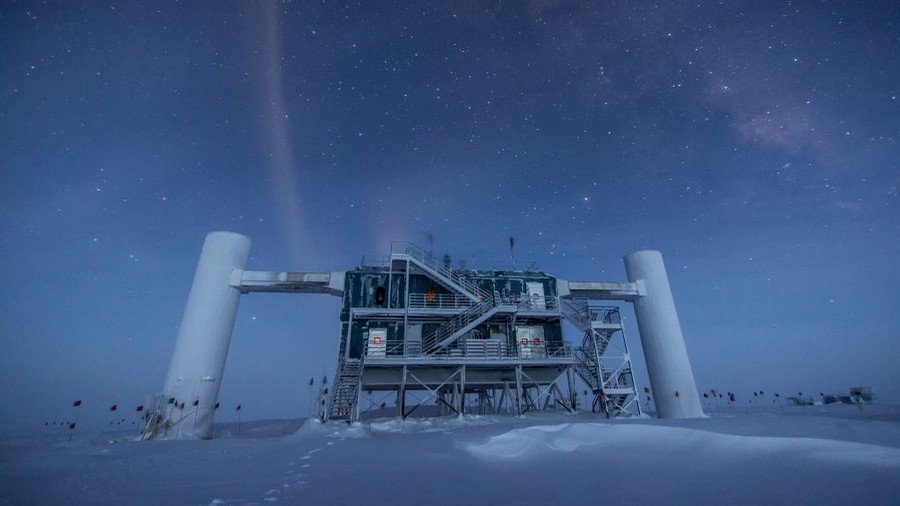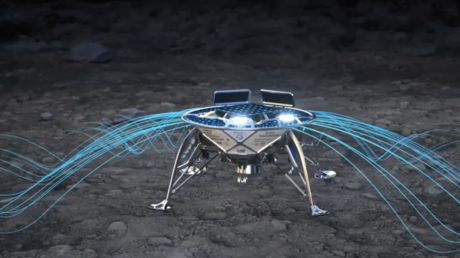Tiny ‘ghost particle’ helps scientists solve century-old space radiation mystery

A tiny ‘ghost’ subatomic particle, detected by scientists as it was racing through the Antarctic ice, may hold the key to the biggest mysteries of the universe and open up a new kind of astronomy based on the study of neutrinos.
Since cosmic rays were discovered in the early 1900s, scientists have been working to find the source of the energetic particles bombarding our planet. It was no easy task, as cosmic rays are electrically charged and their route becomes untraceable after numerous contacts with magnetic fields in space.
And this is where neutrinos came to astronomers’ rescue. These tiny subatomic particles have no charge and, on most occasions, don’t interact with other matter at all. It makes them nearly impossible to detect but, if spotted, they can be reliably traced to their place of origin as they travel almost in a straight line.
And last September the IceCube Neutrino Observatory near the South Pole was finally able to detect and follow the path of a single neutrino, using its 5,160 light sensors, placed deep in the Arctic ice.
“It’s exciting, no doubt, to have finally nailed the cosmic accelerator,” lead scientist with IceCube Francis Halzen of the University of Wisconsin-Madison, told National Geographic of his teams’ success.
In less than a minute after an elusive particle (travelling at almost the speed of light) was detected, the observatory asked astronomers around the globe to point their telescopes to where the neutrino supposedly began its journey.
The path of the “ghost” particle was traced back to a spot in the sky near the constellation of Orion where a massive source of gamma-rays, called blazar, was located.
One of the most powerful of the known blazars, in the TXS 0506+056 galaxy some four billion light-years away from Earth, was confirmed to be the birthplace of the neutrino. However, it doesn’t mean that the mystery of the source of space radiation has received a univocal answer.
The discovery is “very impressive, and a step in the direction of identifying the origin of the cosmic rays, one of the great outstanding astrophysical puzzles,” Kathryn Zurek of Lawrence Berkeley National Laboratory said, adding, however, that there may be other sources of cosmic rays.
The scientists believe that particles also emanate from star-forming galaxies, interacting supernovae, low-luminosity gamma-ray bursts and radio galaxies, among other sources.
But the discovery, which was announced on Wednesday in Science magazine and other outlets, still has an amazing potential and may even allow humanity to someday understand how matter prevailed over anti-matter after the Big Bang.
It’s a breakthrough in so-called ‘multimessenger’ astronomy, which relies on data of different categories in its research of the universe, with neutrinos being a new and important source of information, helping the scientists establish a full picture.
READ MORE: Report reveals outdated NASA policy poses contamination risk for Earth, universe
“Neutrinos held the promise for some time of being able to map the sky like you would with light but at higher energies. We can ask questions or try to answer questions that you couldn't otherwise,” Greg Sullivan of the University of Maryland, who was involved in the IceCube project, told Space.com.
Sullivan said the research into the ‘ghost particle’ will continue and will be expanded, as scientists plan to construct an even larger neutrino detector than the IceCube.
If you like this story, share it with a friend!
















